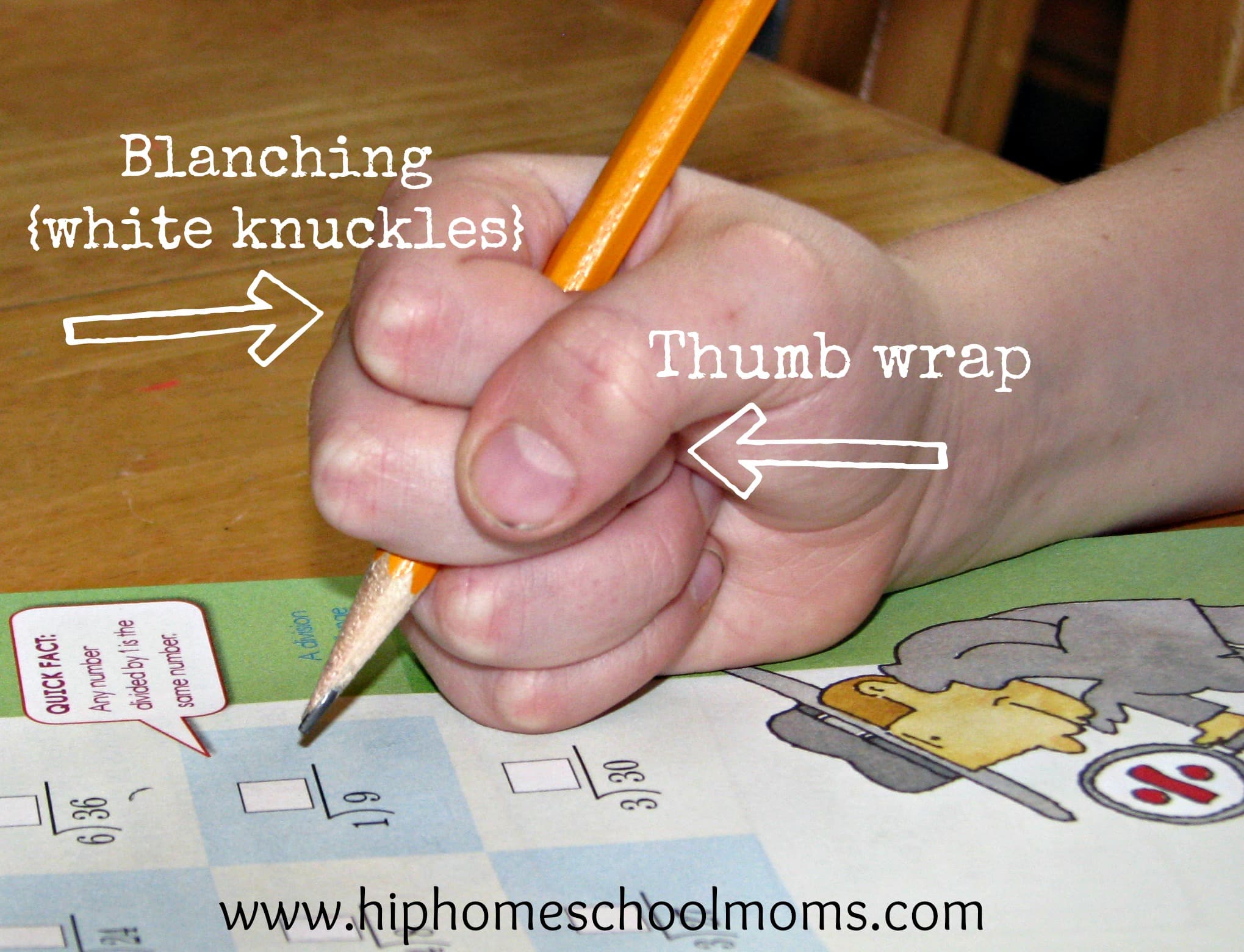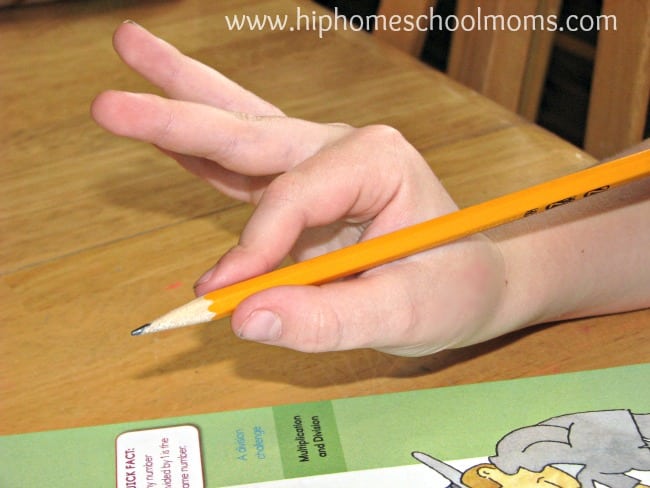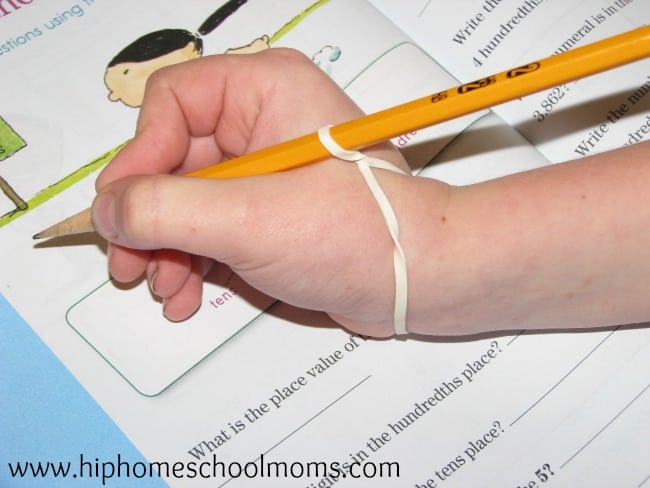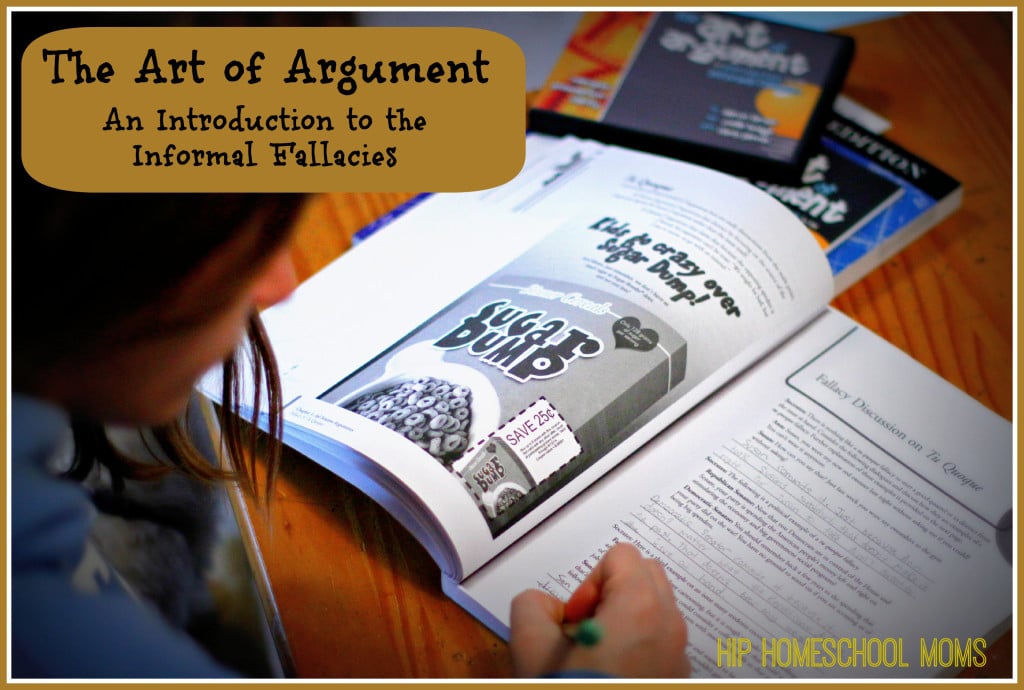A Good Pencil Grip Can Make All The Difference

My son always held his pencil with what is called a thumb wrap. It’s not uncommon, but does make the mechanics of writing much more challenging. At first, when I noticed, I brought it to his attention gently, showing him the “correct” way to hold a pencil. This, of course, didn’t go over well. He liked the way he held his pencil. It was comfortable and what he was already used to. I let it go thinking, “What does it matter anyway? So what if he holds his pencil the way he does?” He could still write and, honestly, I didn’t think it would be possible to get him to change the way he held his pencil anyway.
So I let it go…until we had an opportunity to meet with a handwriting expert and occupational therapist through our local homeschool group. I was skeptical. My son was even more skeptical. So we talked about it and agreed we’d go with open minds and teachable hearts, ready to listen.
The very first thing the specialist did was ask everyone to write their names while he watched them. Thankfully, he was very encouraging and enthusiastic. His goal was not to change anyone’s pencil grip, but to get the children to want to change their grips based on how much easier it was to write when holding their pencils the “right way”.
Let’s clarify what a proper pencil grip looks like (according to our handwriting expert):
If you pick up a pencil with your index finger and thumb (pinching fingers) you are, at the same time, creating an “O” shape or the sign for “okay”. When the middle finger is added to the thumb and index finger, you’ve formed a triangle. This is called a Tripod grip. We were told by the handwriting expert that as long as that “O”shaped space was visible when holding the pencil with a Tripod grip, then that was great. And imagine the last two fingers (ring finger and pinkie) holding a chip counter to the palm of your hand. These two fingers serve to support the middle finger while writing. The most important thing to remember when forming a better pencil grip is to leave that open space between the thumb and index finger that will help your child write with much more ease and comfort.
My son, of course, was already comfortable and very used to his current thumb-wrap-no-“O” shape-pencil-grip. But when we began to go through some of the exercises to test this expert’s “correct pencil grip” theory…that it would make the mechanics of writing easier, we were stunned with the results.
In my son’s words, “When I hold my pencil the new way, my hand doesn’t get tired and sore. It’s a lot easier to write now.”
Here are a few things we learned:
*If your child’s fingers are blanching (knuckles are turning white) while writing, he’re holding his pencil too tight. This means their grips aren’t natural and comfortable. This was the case with my son and was part of why he tired so easily from writing.
*Lying on your stomach on the floor to write is a great way to practice writing because your elbows are stationary which causes you to use only your hand and fingers instead of your whole arm. This was challenging for my son while writing with a thumb wrap. But doing it with a better grip was much easier and less straining.
*There are many different pencil grip aides you can buy to slide on the end of your pencil. Sometimes this can help your child create a better habit.
*To help your child keep his or her pencil in the right position, draw a dot on the webbing of his skin between the thumb and index finger. This will serve as a reminder so he can watch that his pencil doesn’t sway from side to side.
*Try taking a rubber band and twisting it once around a pencil and then around your child’s wrist to help him keep his pencil from moving around.
*Smaller writing implements, such as shorter pencils or even broken crayons, encourage a more proper grasp.
*Finding really detailed coloring pages for your child to color is also helpful in building better writing mechanics. Encourage him to hold his writing implement using his pinching fingers while creating that open space in between, and only ask him to color in small areas at a time so it doesn’t feel too overwhelming for him. These were really helpful to my son.
*It was also highly recommended that we use two-lined writing paper instead of the more traditional three-lined writing paper. When children are learning how to form and write their letters while also mastering a good pencil grip, they will often forget which lines they are supposed to be aiming for causing them to move up and down and all over the lines. So we bought a notebook of two-lined writing paper from Handwriting Without Tears to test that theory as well. Sure enough…my son’s stress level and frustration were reduced significantly. He was much better able to distinguish between each set of double lines, and his writing was much more evenly spaced and readable.
So if your child is just learning how to write and hold a pencil, I hope some of these ideas might be helpful to you in your teaching. And if your child is already in the habit of holding a pencil in such a way that it looks uncomfortable, causes him to tire easily, and makes writing a real chore, then maybe a new pencil grip perspective is in order. It sure has made all the difference in my son’s desire to write and the quality of his writing.












I second and third and fourth EVERYTHING you just said! My DD is also nine and handwriting (as well as silverware) has ALWAYS been a problem. I also didn’t think it was that big of a deal. My dad and husband are both lefties, so I’m used to seeing strange grips. But now my DD also visited the OT who confirmed that her closed grip is making it very hard and tiring for her. Our OT also suggested a clipboard on a 3 ring binder, clay or putty play to strengthen the hand and “grotto grips” for proper positioning.
Did your expert give any clues on the proper grip for lefties?
It’s slightly different. I remember they need to hold the pencil higher back from the end, and I believe it rests closer to the knuckle on the index finger.
My two kids are lefties, but do most of their “writing” on the computer. the physical act of putting pen to paper is more frustrating than the “putting thought into words” part of writing. 🙂
Correct pencil grip makes such a big difference. Great tips, Megan! I’m always wishing there was more information disceminated out there about this and I’ll be sharing your post! 🙂
BRILLIANT post!!! Thank you so much. My 5 year old LOVES school but is getting really bothered with writing correctly. Since he is strong willed too, this makes things so difficult. You may have just saved our first year of homeschooling! Thank you so much for this post.
Thank you for information about proper pencil holding! My son has very poor hand writing and I wonder if it is because of how he holds his pencil. He is 12 and I would think that his penmanship would be better by now. We are working on it! 🙂
Sometimes I use a highlighter in the 3 lined writing paper and use pink on the bottom lines and blue on the top lines to help them focus on which lines they should write on.
I have an online friend and follower, Handwriting with Catherine, and she would definitely love this post! I’ll share it!
My daughter gripped her pencil with the fist for years, her OT said she was doing this because her hand and finger muscles were weak. She is now gripping the correct way and she is a lefty too!! It was just a OT of practice and repetition for us to correct her grip.